Evia trip 29 April – 6 May 2017
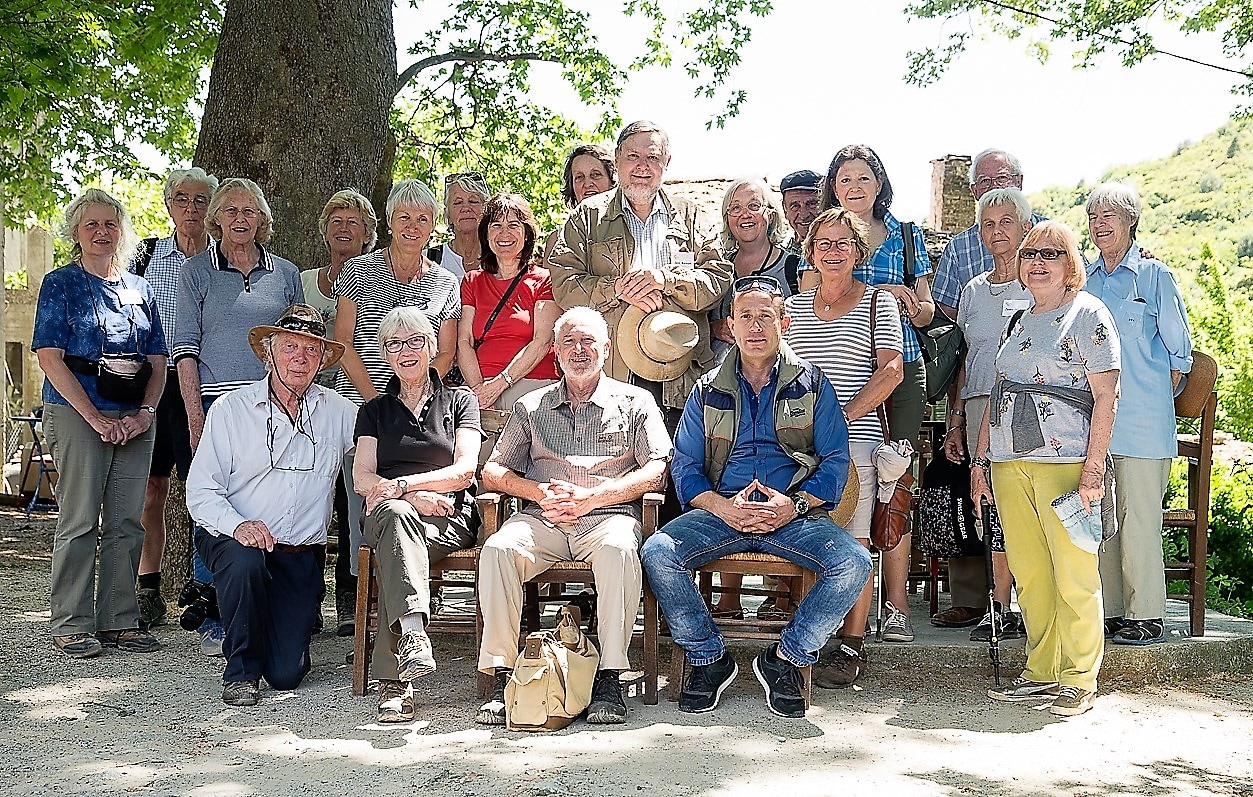
The group
Day 1 – Arrivals
Due to ferry timings from the island of Skiathos we had arrived on the Friday evening to be warmly greeted by Graham Kendall, our botanist for the trip, and an enthusiastic staff at the Karystion hotel.
On the Saturday we took advantage of our extra day in Karystos to drive across to the north coast and visit the impressive Dimosaris Gorge, walk to Cape Kodonia and then north for an hour or so along the Aegean coast with views over to the island of Skyros. The hillsides were covered in Phlomis fruticosa and Euphorbia acanthothamnos. Following a bracing swim at the delightful Agios Dimitrios beach we returned to Karystos.
On our return to Karystos we met at dinner in the hotel with Annie Apgar, our leader, and the rest of the group who had arrived by ferry from Rafina to Marmaris, having previously assembled at Athens airport. There were lots of old friends from previous MPG trips as well as many new faces including Beatrice and Francoise from Belgium.
Day 2 – Gravia, Castella Rosso and Ktima Montofolio
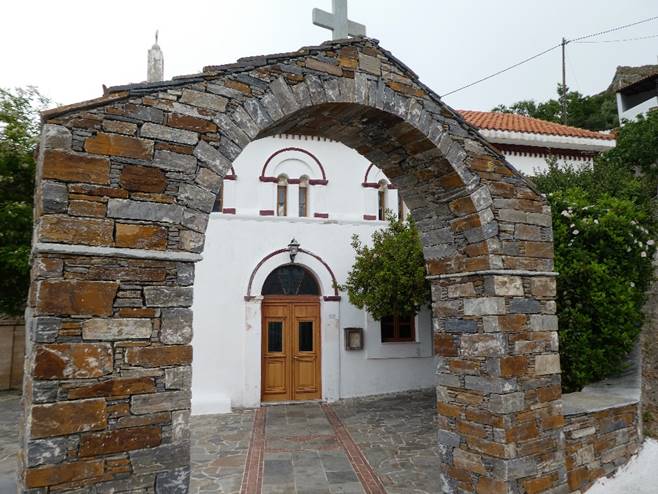
St Sophia church, Gravia
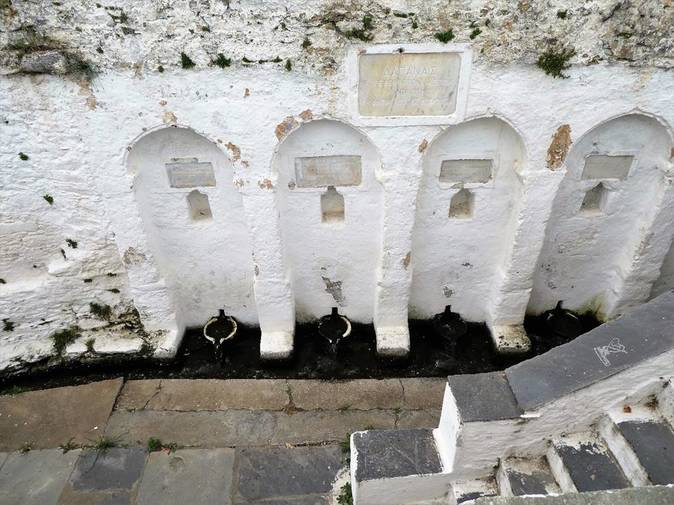
Turkish wash bowls
The day started with a short bus ride followed by a river crossing and walk up an old kalderimi to the church of St Sophia at Gravia. The church had previously been a mosque, during the Ottoman occupation and before that a Byzantine church. The washing bowls below the church which were fed from springs in the hills were a reminder of the church’s previous existence as a mosque in the Turkish era.
Plants found on the way to St Sophia:
Ballota acetabolosa – the buds of which are used as wicks in oil lamps mostly in churches
Phelipanche ramosa
Malabaila involucrata
Vicia melanops
Quercus coccifera with Kermococcus vermilio “gall”.
N.B. Graham has kindly provided the list of plants he noted on each day, however in most instances the names of plants previously noted have not been repeated in the subsequent lists.
The bus then took us up to the Castello Rosso which was built by the Lombards in 13th Century on the site of an older Byzantine castle which had in turn been built on the site of the acropolis of ancient Karystos. The castle was taken over by the Turks in 1470 and held by them until handed over to the Greeks in 1833 during the Greek War of Independence. Below the castle the remains of the Roman aqueduct could still be seen and on the escarpment to the east the remains of the Roman quarry, from where the famous green and white cipollino marble was shipped to the rest of the Roman empire.
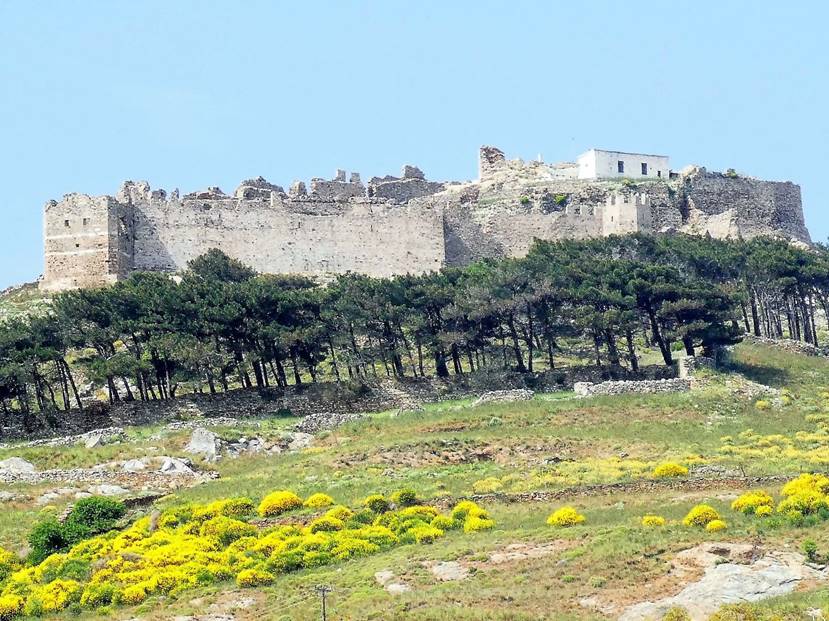
Castello Rosso from Ktima Montofolio
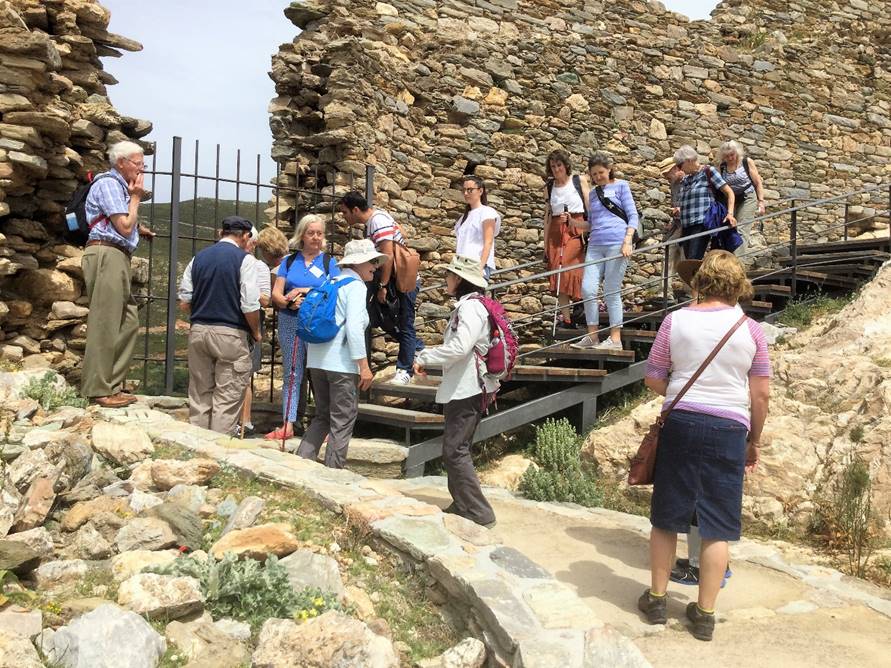
Annie explaining the history of Castello Rosso
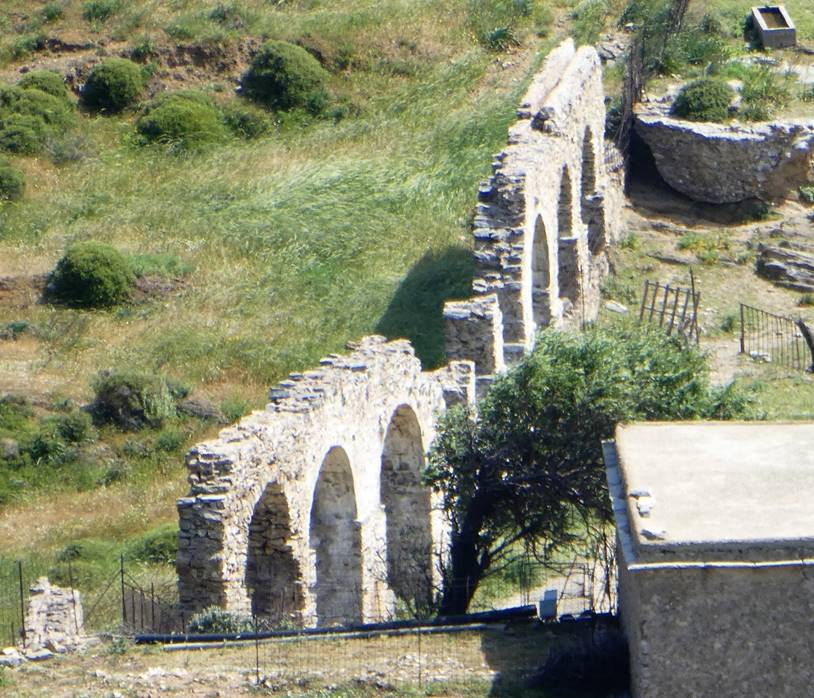
Roman aqueduct below Castello Rosso
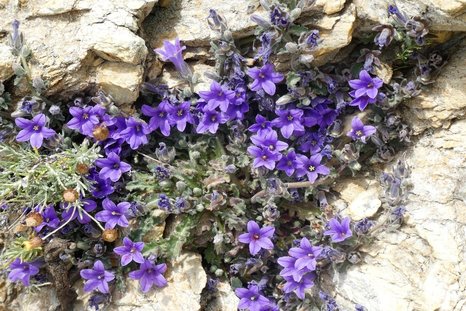
The walls of the castle had many examples of the endemic Karystos bell flower Campanula celsii subsp carystea
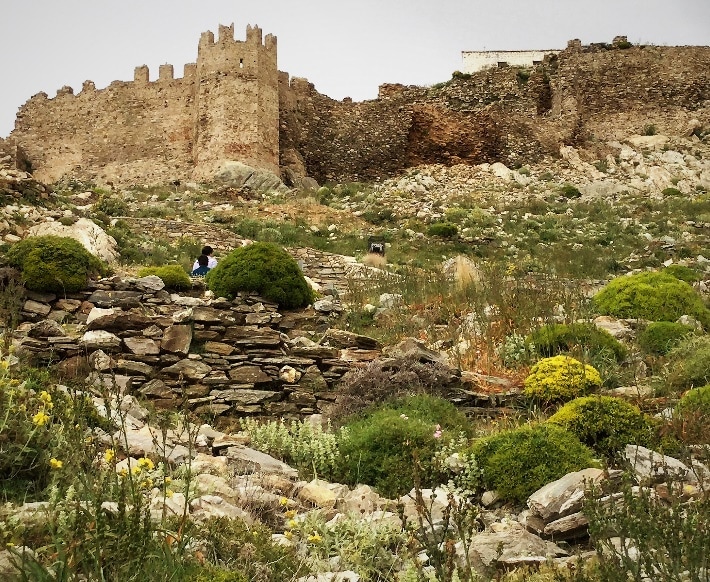
Phrygana below the castle
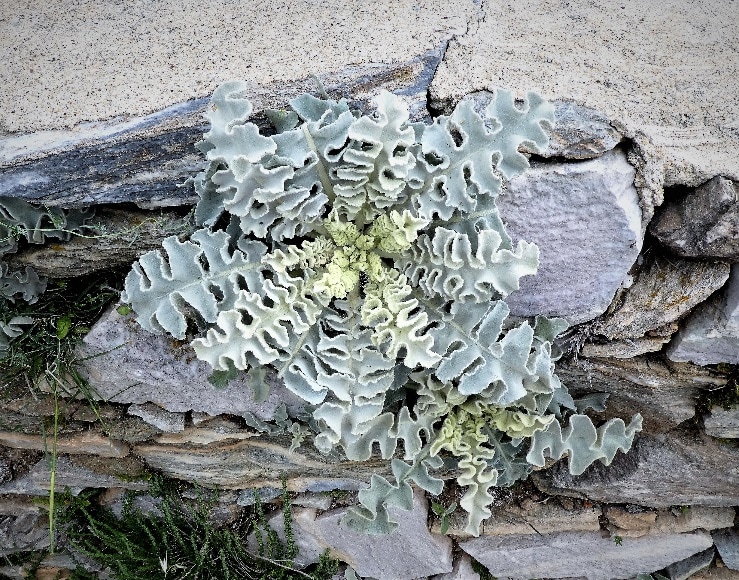
Verbascum undulatum
Plants noted at Castello Rosso:
Anthemis rigida
Asplenium ceterach
Centaurea raphanina
Campanula celsii subsp carystea
Echium italicum
Echium plantagineum
Euphorbia acanthothamnos
Hyocyamus albus
Micromeria graeca
Phlomis fruitcosa
Sarcopoerium spinosum
Verbascum undulatum
After lunch at the taverna Gero Platanos, we walked down to the Ktima Montofolio winery where Danae, the daughter of the owners, gave us a brief history of the estate and the wines they produce. We were also able to taste and purchase their special desert wine. The vineyard was re-started in 1987 by the family of Pavlos Karakostas making sweet dessert wines using the ancient Greek method with four grape varieties. After harvest, the grapes are exposed to the sun for 10-15 days for partial dehydration before being aged in French oak barrels for five years and then in bottles for 18-24 months before being marketed. During the Ottoman occupation the vineyard belonged to the Pasha of Karystos and in Byzantine times the wine cellar formed part of the church of St Mark and archaeological finds date back to 400BC.
In the evening we had a convivial meal on the water front in the Taverna Marinos.
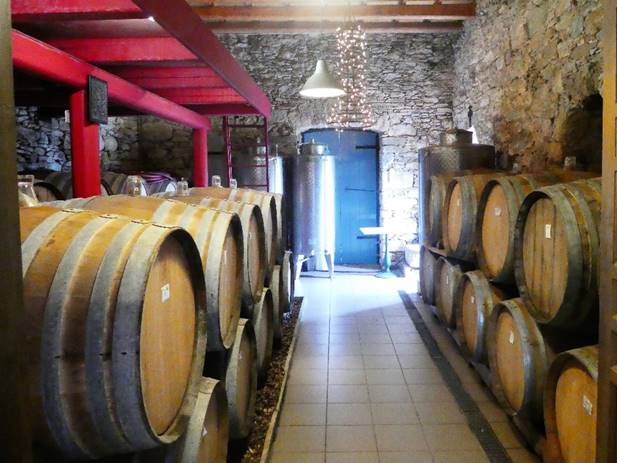
Plants found on walk back down to the hotel:
Campanula spatulata
Cerinthe major
Knautia integrifolia
Lagurus ovatus
Phagnalon graecum
Day 3 – Western slopes of Mount Ochi and the Petrokanalo Pass – May Day
Our bus took us up the steep ascent on the western slopes of Mount Ochi to the Petrokanalo Pass (960m), from where we could see the start of the Dimosaris Gorge and both the Aegean Sea to the east and the Petalioi Gulf to the west. It was extremely windy on the mountain and this area of South Evia is being extensively developed for green energy we passed new wind turbines being installed on the western slopes of Mount Ochi, also numerous wind farms could be seen on the many ridges to the north.
Plants found on the way up to Petrokanalos Pass:
Cistus salvifolius
Cistus creticus
Fumana arabica
Trifolium stellatum
Trifolium tomentosum
Graham had promised us peonies and we were not to be disappointed. Below the Petrokanalo Pass there was a magnificent collection of the Paeonia mascula subsp.hellenica which varied in colour from white through pink to dark red. In ancient Greece peonies were used for healing purposes and were also believed to aid fertility. Also, there were clumps of Sideritis euboea – mountain tea.
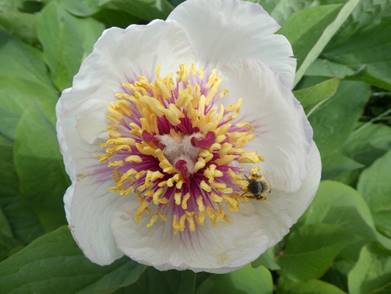
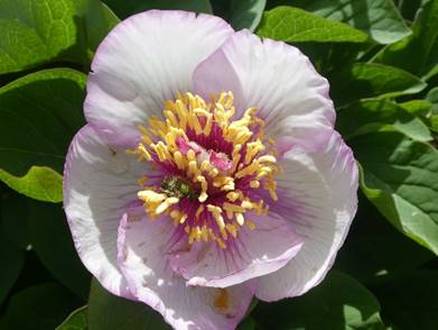
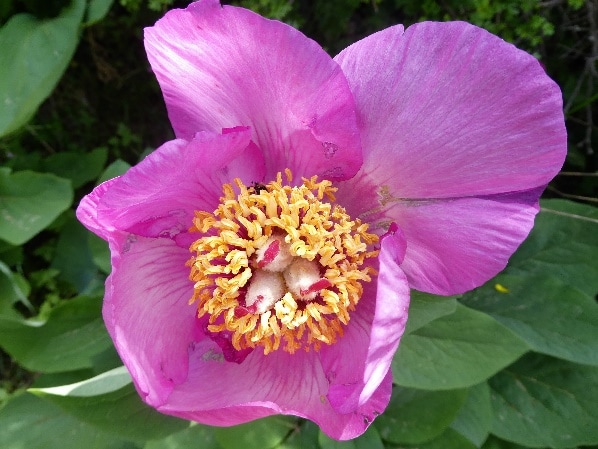
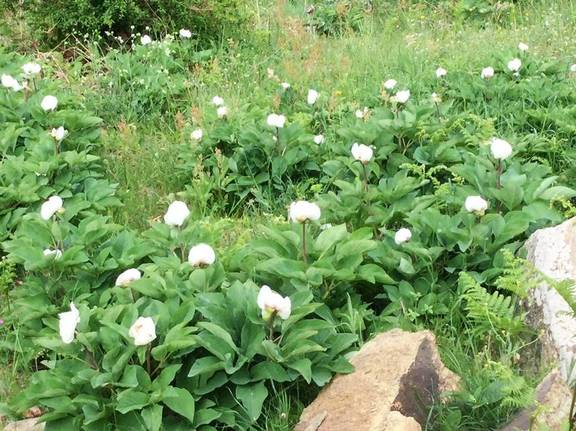
Paeonia mascula subsp. hellenica
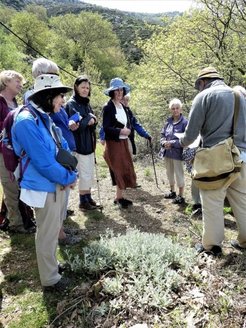
Graham explains the medicinal qualities of mountain tea
At the pass there were carpets of Viola euboea varying in colour from dark purple through white to yellow and many other interesting plants billowing in the wind; which rather inhibited our expert photographers! However the botanists were able to spend a very productive couple of hours on the slopes which stretched up to the summit of Mount Ochi.
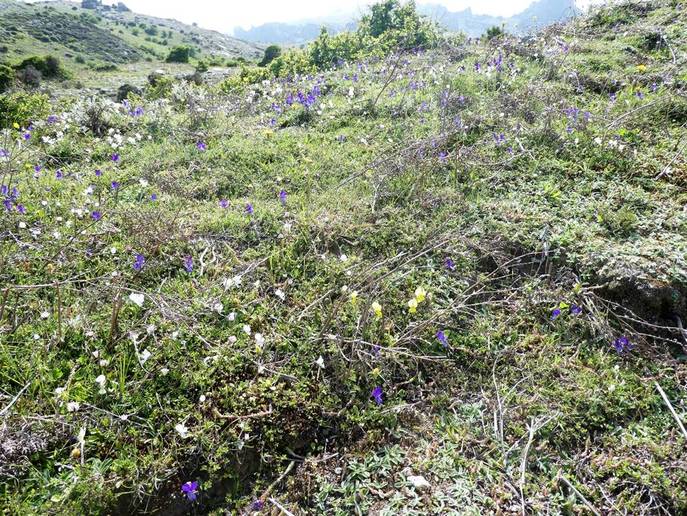
Viola euboea at Petrokanalos Pass
Plants found at Petrokanalos Pass:
Ajuga orientalis subsp. orientalis
Aremone aremonioides
Arum cylindraceum
Campanula spatulata
Centaurea raphanina subsp. mixta
Cruciata possibly laevipes
Doronicum orientale
Erodium cicutarium
Fragaria vesca
Geranium lucidum
Geranium molle
Geranium peloponnesiacum
Melittis melissophyllum
Mysotis possibly incrassata
Neottinia mascula
Ornithogalum possibly montanum
Petrorhagia dubia
Primula vulgaris subsp. rubra pp – not in flower but noted here in previous visits
Saxifraga carpetana subsp. graeca
Silene cretica
Silene pendelica
Silene vulgaris subsp. bosniaca
Stachys cretica subsp. cretica
Teesdalia coronopifolia
Trifolium physodes
Vicia pinetorium
Viola euboea
Viola sieheana
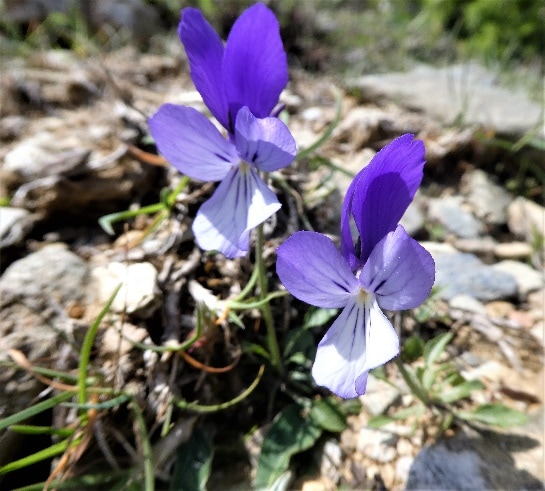
Viola euboea
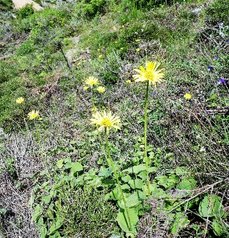
Doronicum orientale
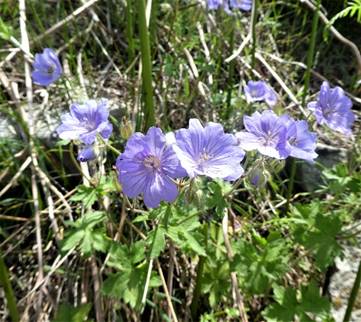
Geranium peloponnesiacum
A number of stone Dragon Houses, thought to have been built by the Dryopes tribe about 3,500 BC, are located at the summit of Mount Ochi; we were to see a fine example of a Dragon House later, on our journey to north Evia.
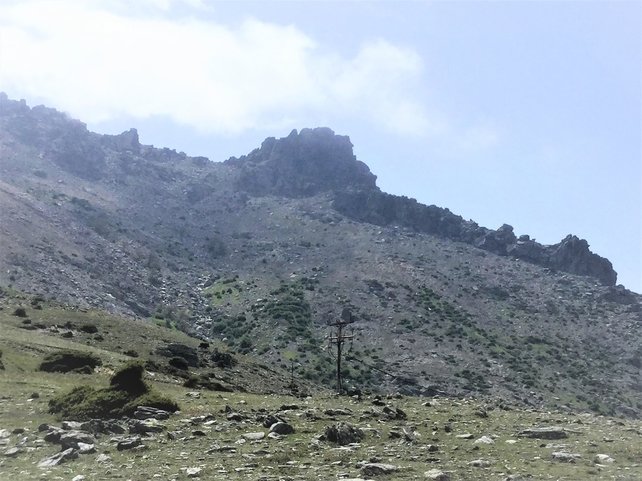
Summit of Mount Ochi from the Petrokanalos Pass
On the way back down the mountain we stopped again at the area of the peonies for an enjoyable picnic; it was noticeable that the peony flowers were much further open than earlier in the morning.
Back again in the bus we descended the steep mountain road stopping to admire the fields of Asphodels which at this altitude were still in flower.
Plants found on the way down Mount Ochi:
Asphodelus ramosus
Lavendula stoechas
Legousia speculum-veneris
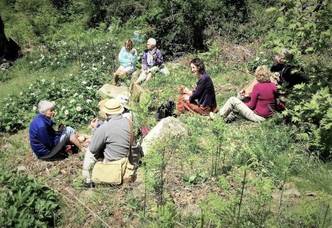
Picnic amongst the peonies
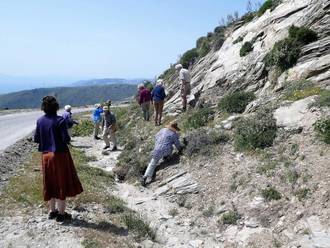
Botanising on the way down from Mount Ochi
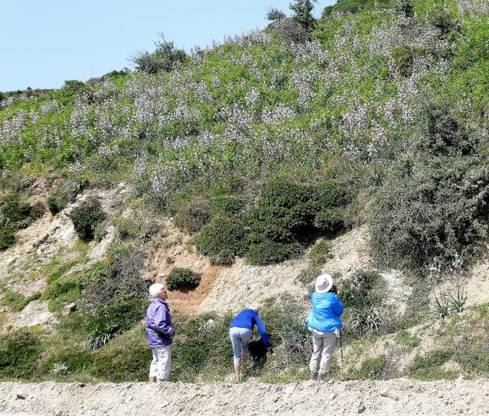
Asphodelus ramosus
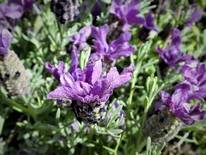
Lavandula stoechas
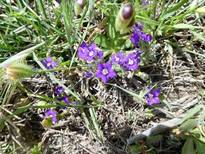
Legousia speculum-veneris
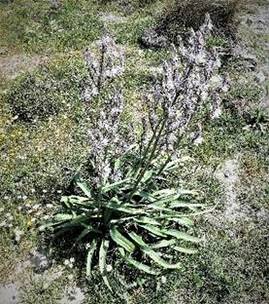
Asphodelus ramosus

May Day wreath
As it was May Day there were several houses and tavernas displaying May Day Wreaths on their doors. In the old days the wreaths used to be made of wild flowers but now, much to the relief of the Botanists, garden flowers are used instead. The local tradition is that the wreaths are displayed until Mid-Summers Day, when they are piled up in the streets and burnt; the custom is that the children jump over them when they are alight – Health and Safety in Greece??
In the evening we had another convivial meal, this time in the Taverna Cavo D’Oro.
Day 4 – Karystos Museum, eastern slopes of Mount Ochi, the ancient chestnut forests at Kastanologos and the Lovers’ Bridge at Platanistos.
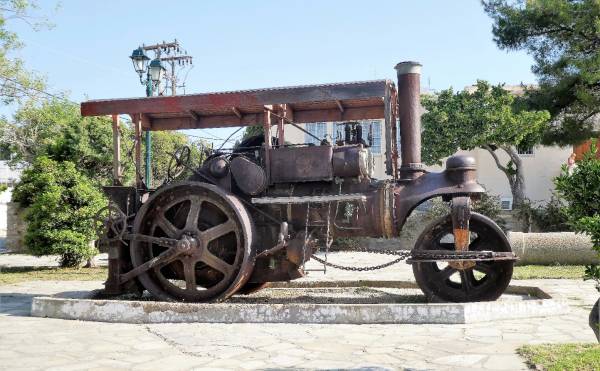
Marshall Steam Roller Model No 80353 with Allen Patent Scarifier Model No 822
The morning started with a visit to the Karystos museum, where there were on display very interesting archaeological finds from the surrounding area. The museum showed the history of the Karystos area dating back to Late Neolithic times (4,000 to 3,000 BC), through the Early Middle and Late Helladic periods (3,000 to 1,050 BC) up to the Roman era. Karystos was famous in Roman times for its quarries from which the green veined cipollino marble was exported throughout the Roman empire for use in the construction of many famous buildings such as the Trajan Forum in Rome and the Library of Hadrian in Athens. Cipollino marble continued to be used during the Byzantine era in such buildings as the church of St Sophia in Constantinople and the basilica of St Demetrios in Thessaloniki.
Standing outside the museum there was a monument to British engineering skills of the early 1900s – a Marshall Steam Roller in urgent need of some restoration!
Later in the morning our bus took us up another steep ascent of Mount Ochi, this time on the east side of the mountain, to Kastanalongos (1,100m). On the way up there were large areas of Arbutus unedo and Genista acanthoclada.
Arriving at the ancient wild chestnut forest it was sadly apparent that a lot of the trees were dead and gave the appearance of silvery ghosts. Graham had unfortunately been unable to find any definite explanation as to why the trees on the higher slopes had died or indeed why the trees in the main forest on the lower slopes were showing definite signs of severe die back. However it was pleasing to note that some efforts are now being made at some restricted re-generation.
Viola euboea in all their colours were again in abundance on the hillside with many other interesting plants both on the hillside and in the chestnut forest.
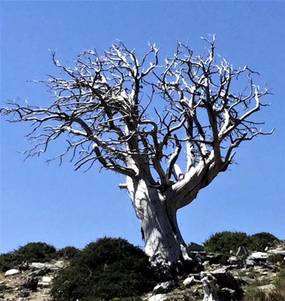
Ghost of the forest
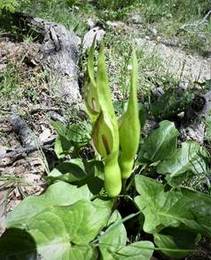
Arum cylindraceum
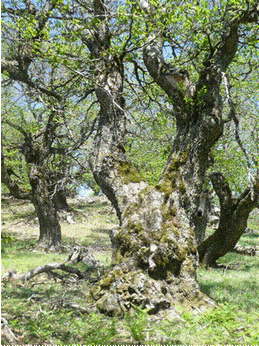
Die-back in the forest
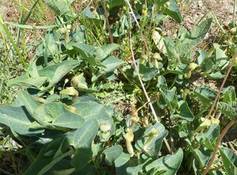
Aristolochia elongata
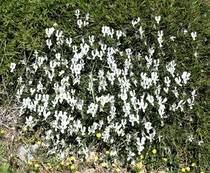
Violas in white (above) and blue (below)
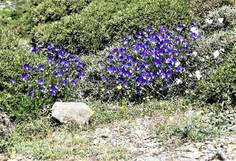
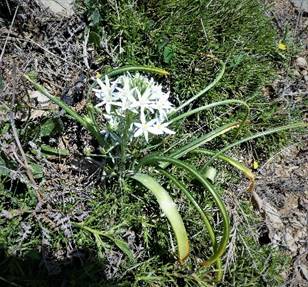
Ornithogalum ?montanum
Again the wind made it difficult for photography, however to get his required “pin sharp” photograph of the Malcolmia marcrocalyx Brian was able to call on Geraldine to act as a human wind shield. As is normally the case, Brian’s attention to detail produced a very good photograph considering the windy conditions.
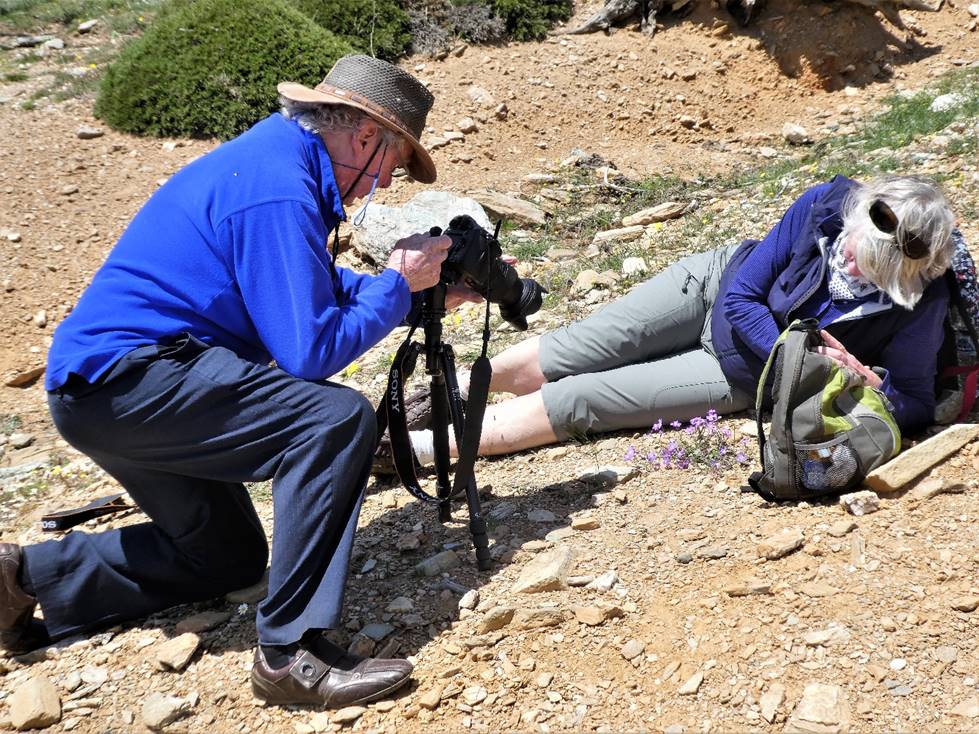
Pin sharp photography
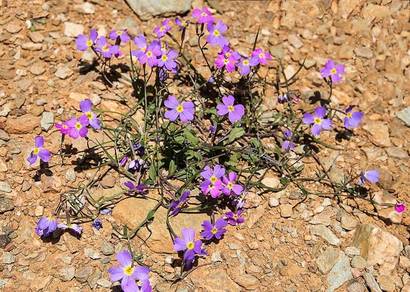
Malcolmia marcrocalyx
Plants found at Kastanalongos:-
Aristolochia elongata
Arum cylindraceum
Colchicum sp. – post flowering
Crocus nivalis – post flowering
Erica manipuliflora
Geranium possibly G. molle or G. pusillum
Geranium purpureum
Helianthemum nummularium
Lamium garganicum
Legousia speculum-veneris
Malcolmia macrocalyx
Ornithogalum possibly O.montanum or O.atticum
Senecio possibly S. squalidus
Spergularia rubra
Veronica possibly chamaedrys subsp. chamaedryoides
Viola euboea
Viola possibly kitaibeliana or phitosiana
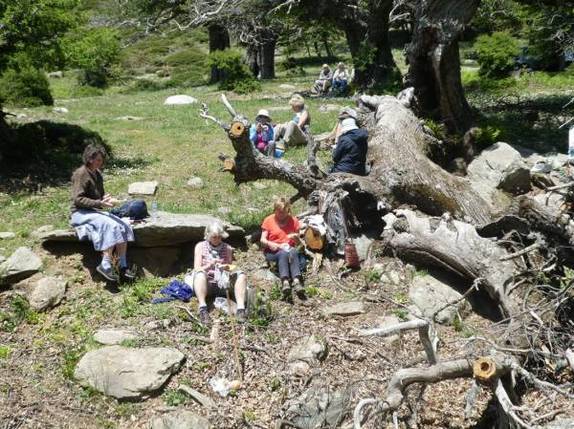
Picnic in the chestnut forest
After our picnic lunch we walked through the forest noting the steps being taken to encourage re-generation by protecting the young saplings from the marauding goats! At the southern edge of the forest we could see the north coast of the island of Andros in the distance. Due to the high winds and fast currents the channel between Evia and Andros is reputed to be one of the most dangerous in the Aegean.
Back in the bus we came down from Mount Ochi to the attractive river and waterfall at Platanistos Bridge. Annie explained that the local folklore is that this is the place where young lovers came to plight their troth for life – “by padlocking themselves together and throwing away the key”.
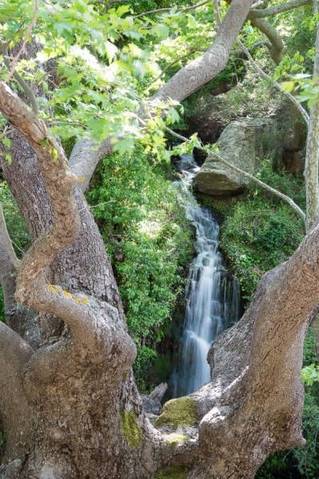
Waterfall at Platanistos bridge (BC)
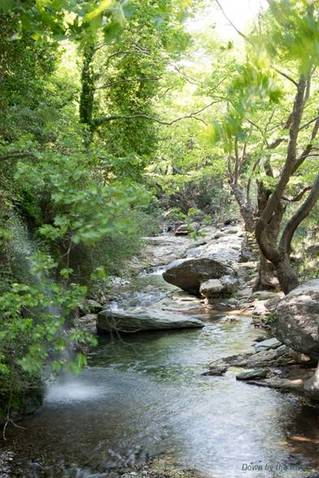
Waterfall at Platanistos bridge (BC)
Plants found at Platanistos bridge:
Adiantum capillus-veneris
Campanula celsii subsp. carystea
Dittrichia viscosa
Gladiolus illyricus
Limodorum abortivum
Nerium oleander
Pallenis spinosa
Pistacia terebinthus
Quercus coccifera
Securigera securidaca
Serapius bergonii
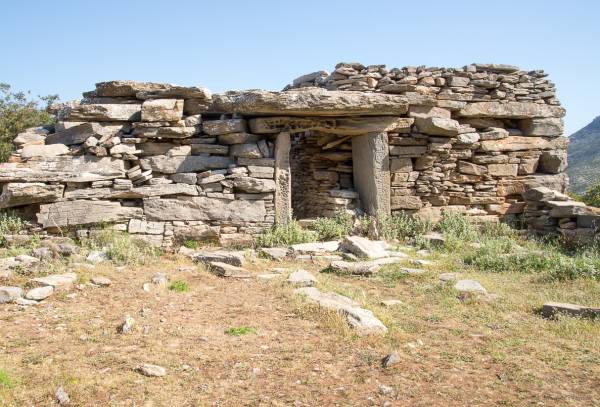
Dragon House (BC)
DAY 5 – Travel to Rovies via Dragon House and Steni.
It was now time to leave Karystos and move on north to Rovies. On the way we saw many examples of the new industries in South Evia – Fish farming and wind farms. Near Stira we had the opportunity of visiting, and going inside, a Dragon House which was in remarkable condition considering it dated from about 3,500 BC and there was no form of security to protect it. The construction was stone and the walls were corbelled in to form the roof. Annie explained that the major unsolved conundrum is how had the stone door lintels, which must weigh several hundredweights, been put in place over the 2m high entrance.
Plants found in the vicinity:
Allium subhirsutum
Juniper phoenicea
Ophrys cornuta
Our arrival for lunch in Steni coincided with the arrival of two bus loads of Greek pensioners on a day out. Despite the Greek economic crisis they were having a very boisterous time, with lots of food, wine and singing of Greek traditional songs. As result, the taverna was very busy and the service was unfortunately very slow; this meant that the walk under Mount Dirfys had to be somewhat curtailed. However we had time for Graham to locate the Campanula constantinii as well as various other plants.
Plants found on the walk under Mount Dirfys:
Ajuga chamaepitys
Alkanna graeca
Campanula constantini
Dracunculus vulgaris
Euphorbia characias
Orobanche possibly gracilis
Stachys tetragona
Teucrium capitatum subsp. capitatum
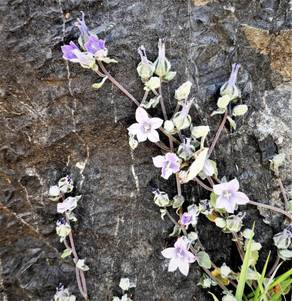
Campanula constantini
At the start of the walk we came across a unique example of innovative Greek engineering – a mobile bandsaw.
After a sometimes tortuous drive through the island’s central mountain range there were some lovely woodland scenes as we drove down the valley to the Kireas river. Unfortunately we were unable to stop as we were running behind schedule for our arrival at our hotel in Rovies.
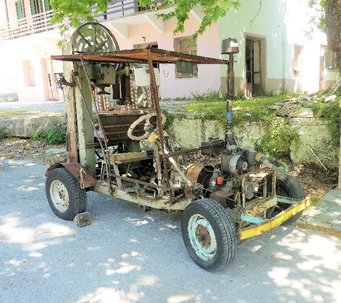
DAY 6 – Mount Xiron, Kokinomilia, Orchids and the Siplas waterfalls.
The Aleppo pines Pinus halepensis on the lower slopes of Mount Xiron are widely tapped for their resin. The resin is used in the production of Retsina a resinated Greek white wine, originally the adding of resin to the wine was carried out to preserve the wine from going sour. The resin is also used in varnishes and for the caulking of wooden boats. In the era of wooden sailing boats Limni was the port from which the resin produced from the slopes of Mount Xiron was exported throughout Greece; the next day we were to see the ruins of the old resin warehouses along the shore line in Limni.
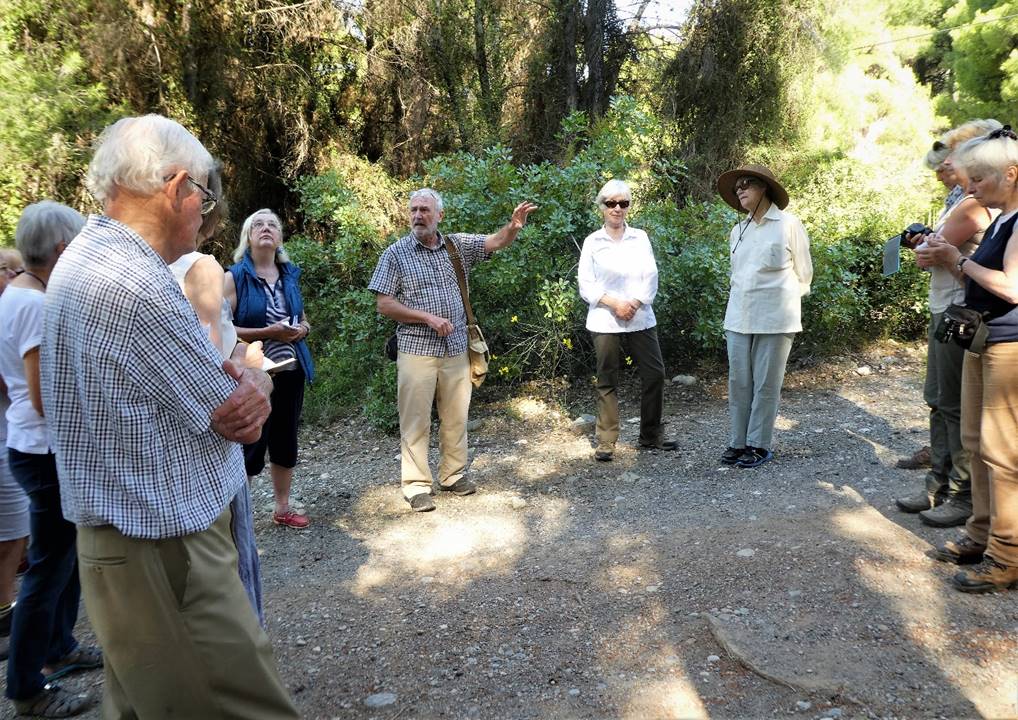
Masterclass with Graham and Annie – Pistacia lentiscus and P. terebinthus in the background
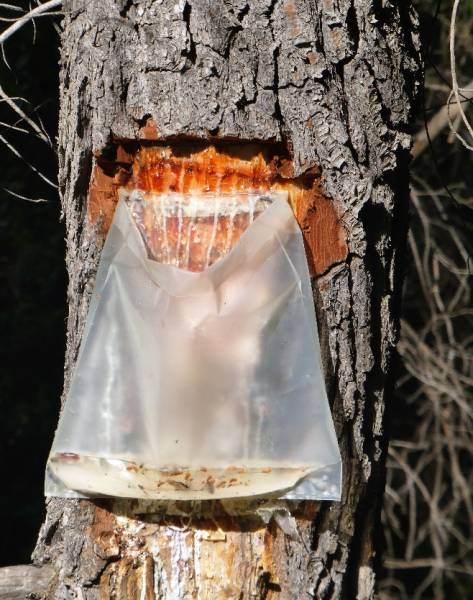
Resin tapping
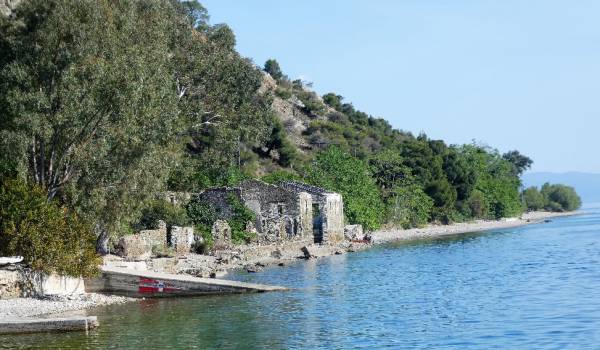
Old resin warehouses at Limni
Our first stop of the morning was to look at the method of tapping the trees, which entails cutting into the bark and collecting the resin in plastic pouches. Previously metal cups were used. We also saw examples of Pistacia lentiscus and Pistacia terebinthus. Graham explained that the Chia variety of P. lentiscus is only found on the island of Chios and is the source of the famous “mastic” which is used to flavour drinks, chewing gum and sweets (On the island of Skiathos the first young shoots of P. lentiscus are picked and pickled in vinegar and served as a “meze” with ouzo). P. terebinthus is a source of turpentine and has medicinal properties.
Our next stop was above the Siplas waterfalls near the village of Drimonas for a plant walk up Mount Xiron, There was an amazing variety of plants and shrubs as we climbed the path up to the picnic area, where some of the group were able to indulge in past pleasures from their youth on the swings. After further botanising in the area we retraced our steps down to the bus which took us to the village of Kokinomilia for lunch.
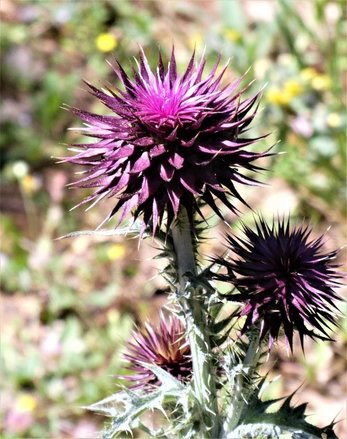
Carduus ?nutrans subsp. leiophyllus
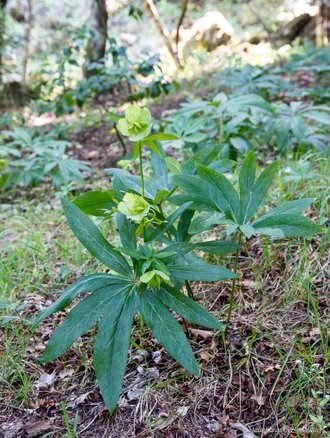
Helleborus odorus subsp. cyclophyllus (BC)
Plants and shrubs found on Mount Xiron:
Abies cephalonica
Alkanna graeca
Arbutus andrachne
Arbutus unedo
Aristolochia elongata
Buglossoides purpurocaeruleum
Carduus possibly nutans subsp. leiophyllus
Centaurea triumfettii
Daphne euboica
Doronicum orientale
Euphorbia possibly apios
Helleborus odorus subsp. cyclophyllus
Hypericum olympicum
Juniperus oxycedrus subsp. deltoides
Lathyrus laxiflorus
Leptoplax emarginata
Melittis melissophyllum
Orchis morio
Pinus nigra
Phillyrea latifolia
Polygala nicaeensis
Quercus possibly frainetto syn. Q. conferta
Silene italica subsp. italica
Viscum album subsp. abietis
The village of Kokinomilia seemed to be mostly deserted but we had an excellent lunch at the taverna, all the food was home grown – from the vegetables to the goat and the bread and white wine were made on the premises!
After lunch Graham showed us a European nettle tree Celtis australis before boarding the bus and heading back towards the Siplas waterfalls.
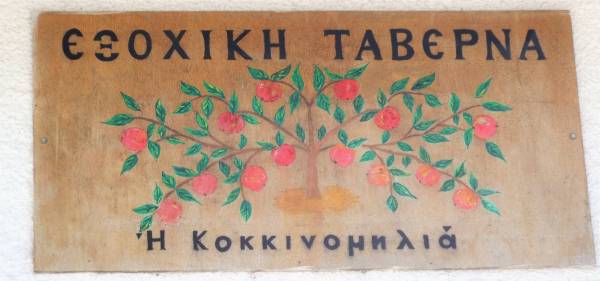
On the way we stopped to look for orchids which were in abundance just off the side of the road. As it turned out we were very fortunate to find them in flower in this location as at Graham’s next orchid stop they had all finished flowering.
Plants found at orchid stop:
Anacamptis pyramidalis
Bellardia trixago
Dorycnium hirsutum
Ophrys fusca subsp fusca poss in form known as O. calcaerina
Ophrys apifera
Ophrys cornuta
We then returned to Siplas for a walk down to the waterfalls which are a major tourist attraction.
Plants found at the Siplas waterfalls:
Aubretia deltoidea
Campanula possibly incurva –not in flower
Fibigia clipeata
Valeriana italica
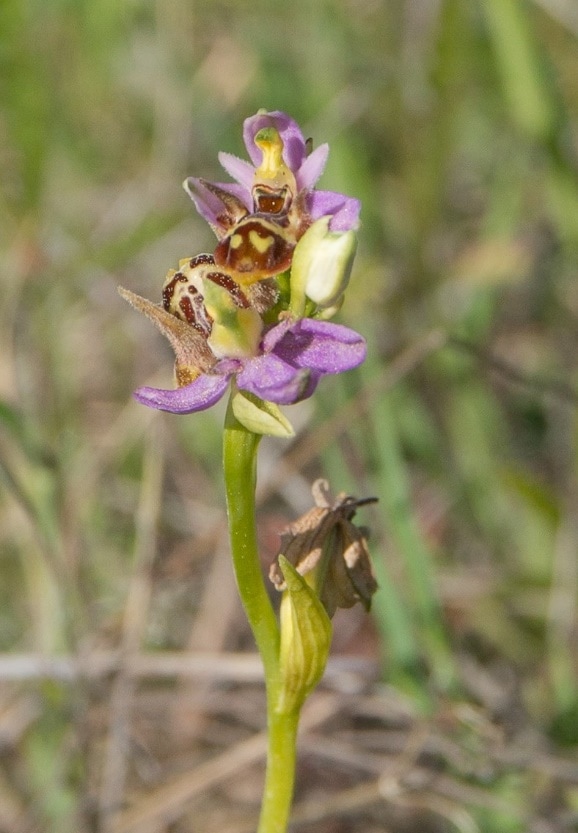
Ophrys cornuta (BC)
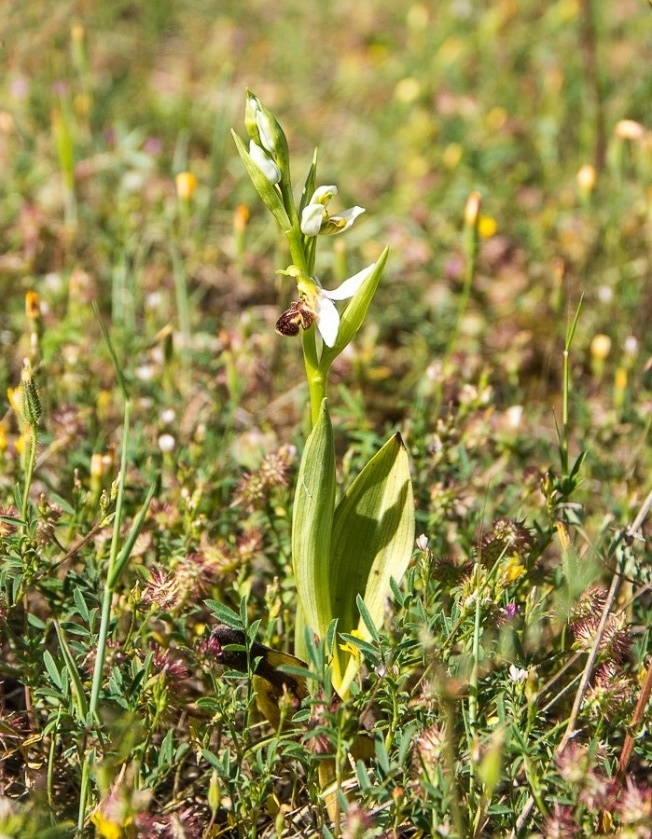
Ophrys apifera (BC)
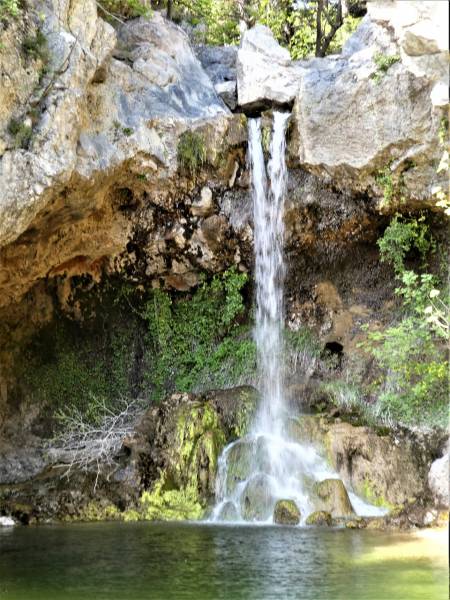
Back in Rovies a small number of the group braved the very stony beach for a bracing swim. What was very noticeable was the lack of wind in Rovies as compared with South Evia and Brian’s lovely photograph exquisitely captures the scene.
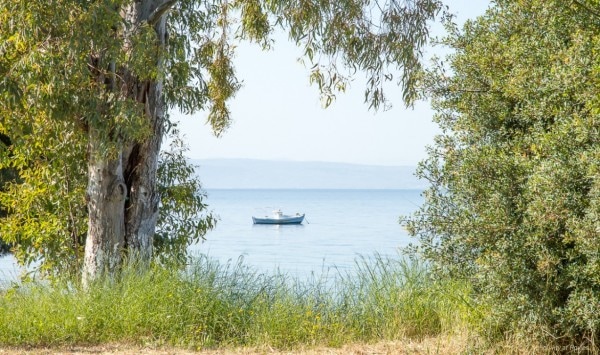
Tranquility at Rovies
Day 7 –Road to Edipsos, Polilofo and Limni.
Our plans for the day had to be slightly altered due to our bus being larger than Annie and Graham had expected. Georgios, our driver, decided that the roads, on the route as originally planned, were too narrow so instead he took us on a detour through the town of Edipsos and then the long way back to Polilofo. The change of plan meant that we were not to see the wild anemones or the Onosma euboica but we did see Capparis spinosa, Salvia pomifera subsp. calycina and Nicotiana glauca.
Polilofo was another seemingly deserted village, apparently having 11 residents in winter, which increases to 20 in the summer, with the one tavern.
After our arrival we walked up the unmade road towards the lower slopes of Mount Valandi, initially passing fields of vines and through wild flower meadows with lots of beehives. The bees could be seen feeding on the flowers of the dog roses and cistus. As we progressed up the track the vegetation changed to the phrygana and then further on to the maquis, which consisted in the main of the two types of strawberry tree, juniper and Spanish broom. Also, we came across two species of Greek tortoise, Testudo hermanni and Testudo marginata.
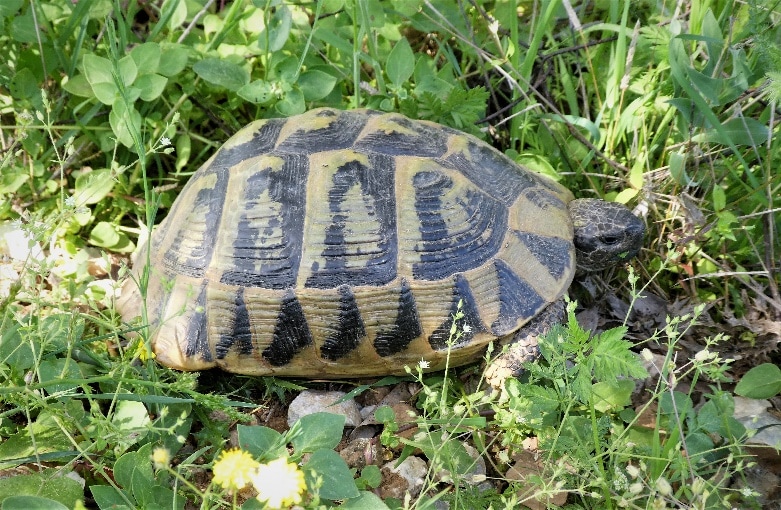
Testudo hermanni
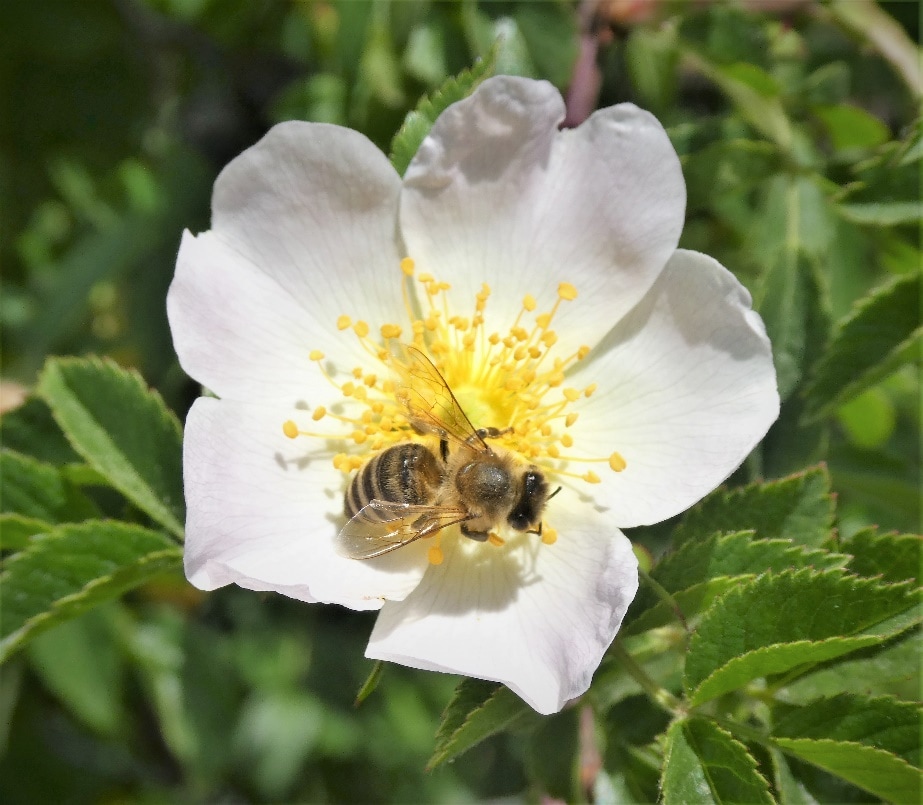
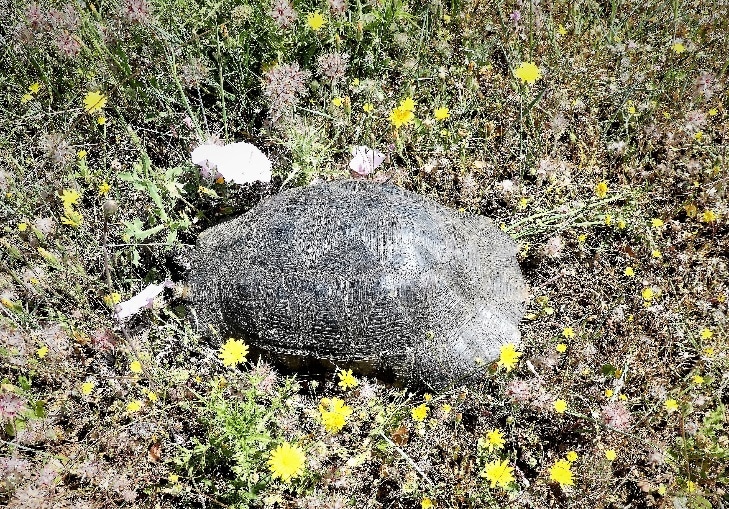
Testudo marginata
Plants found at Polilofo :
Centaurea calcitrapa
Cotinus coggygria
Himantoglossum robertianum
Muscari comosum
Nigella damascena
Trifolium angustifolium
Trifolium stellatum
Tuberaria guttata
Vicia tenuifolia
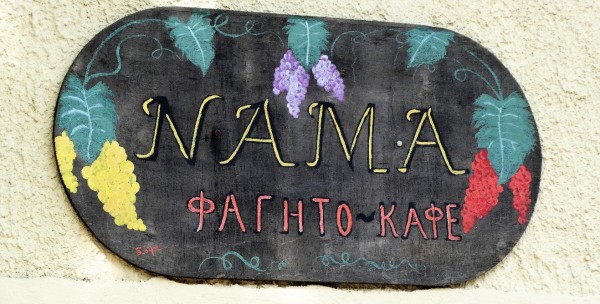
Due to the detour, to avoid the narrow roads, we did not have enough time to walk up the road as far as Graham would have wished and therefore we missed the chance of reaching the promised viewpoint. However this was more than compensated for by the lunch, again mostly home produced food, in the taverna.
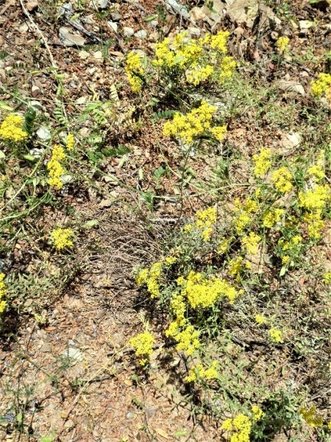
Alyssum possibly chalcidium
The bus took us back through Edipsos, where we dropped off Anna for her to catch a bus back to Athens. We then went on to Limni where, after coffees and ice creams on the waterfront, Graham showed us the endemic plants which flourish in the serpentine rocky areas.
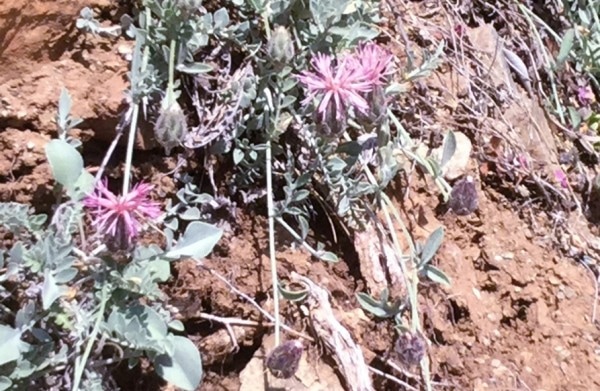
Centaurea ebenoides
Plants found at Limni:
Aethionema saxatile subsp. graecum
Alyssum possibly densistolatum
Alyssum possibly chalcidium
Centaurea ebenoides
Ptilostemon chamaepeuce
Silene fabaria subsp.fabaria
On our return to Rovies, the evening was still hot which encouraged at least seven of the group to brave the pebble beach and the still chilly sea.
Our last dinner of the trip was a very enjoyable affair and we were able to thank Annie and Graham for all their hard work in making the trip such a great success. Our thanks also go to Heather who masterminded the trip and did all the original planning but for family reasons could not be with us. We would also like to thank Brian for allowing us to include some of his very professional photographs in this report. Our thanks again to Graham for the plant lists which have proved most useful in the labelling of our photographs, hopefully correctly!
Saturday morning came and we said goodbye, as we were returning to Skiathos and the rest of the group were taking the ferry from Edipsos to Arkitsa and then on to Athens.
Tim and Geraldine Angel

